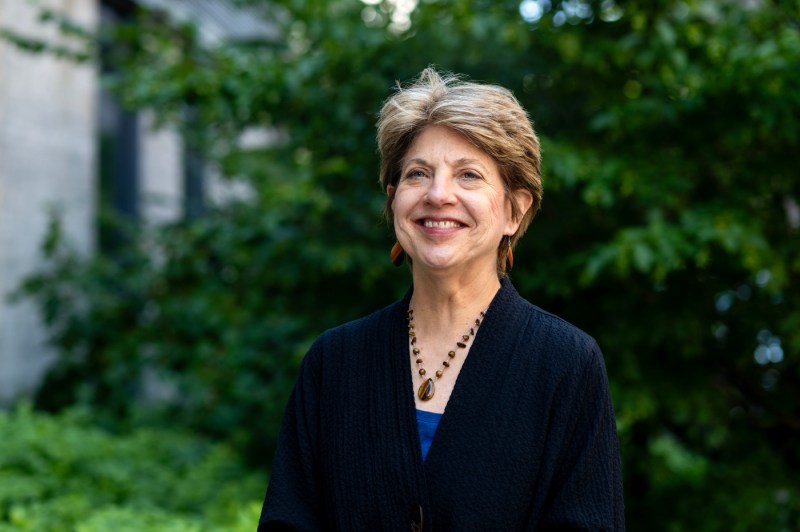COVID pandemic led to positive changes in dating culture in young adults, researcher finds

The COVID-19 pandemic provided young adults with a positive respite from societal pressure, a Northeastern study says, giving young women a greater sense of independence and demonstrating possible healthier and more inclusive dating scripts.
Before the pandemic, contemporary sexual culture normalized casual encounters among young adults without clear distinctions between a hookup and dating.
It offered contradictory risks and rewards for young adults, and young women in particular, says Linda Blum, professor of sociology in the College of Social Sciences and Humanity.
COVID, however, upended the lives of young adults at a life stage when they usually shape their sexual and romantic individualities.
The pandemic created a rare case of a collective break for everyone, Blum says. She decided to investigate how this natural experiment would challenge contemporary sexual culture and its troubling gendered, abusive or exclusionary aspects. She found that the pandemic brought young adults a positive respite, particularly, for young women, and demonstrated possible ways of lowering the dangers of uneasy interactions, unclear consent, and sexual violence.

“That could be very positive, if this persists,” Blum says.
Young adulthood is a pivotal stage in the course of a person’s life, she says. During this time young adults establish their adult identity, experimenting and exploring before making firmer life commitments.
This period before a young individual becomes ready to make long-term commitments, choose a permanent partner or form a family has become longer, however. More women entered higher education, postgraduate education and the workforce, Blum says, but in the 21st century these changes were accelerated by substantial student loan debt and the rising costs of further education that is often required to get a good-paying job.
The study recruited 40 recent graduates and advanced undergraduates in their 20s. The group was highly diverse, Blum says, including individuals of different racial-ethnic backgrounds, gender, class and sexual orientation.
The participants were interviewed in-depth at two different points in time — in the first stages of the pandemic and after COVID vaccines became widely available.
Before the pandemic, young women had been receiving mixed messages, Blum says. The messages of feminist and LGBTQ+ rights movements reassured young women that they have a right to be sexuality active, seek sexual activity and sexual pleasure. But young women are also aware of the risks of being seen as too sexually active and “inviting” sexual violence or being coerced into a non-consensual sexual activity.
Blum and her co-authors, undergraduate students Kaitlyn Eri Lee, Olivia Binder and Emma Clifford, expected to see young women who had been in some kind of heterosexual relationships to follow young men when COVID caused many to move away from campus in the beginning of the pandemic. That wasn’t the case, Blum says.
Many participants of the study reported that they chose to end committed or non-committed relationships because they wanted freedom. Young women used the disruption to prioritize their autonomy.
“There was quite an emphasis in women’s stories of this time that they felt freed from this [pressure of being with someone],” Blum says. “And after widespread vaccination, when people were wanting to see others again, these women wanted dating to be more casual.”
They did not want to be invested in someone, she says, and compromise their aspirations, goals and achievements. That led to increased partner churn and higher emotional detachment, Blum says.
About one-third of the participants who were coupled at the time of the first interview were still seeing the same person a year later.
“Maybe what helped their relationships to last is they often spent a lot of time apart,” Blum says.
The COVID precautions also affected the meaning of consent for the people who continued dating. Young adults communicated for longer periods of time online before meeting each other in person. They waited to have “an indoor date,” as one participant said in her interview.
Previously, affirmative consent was understood as something that men were seeking in heterosexual relations and women would give or deny it. The pandemic promoted more intentional dating practices, Blum says, which lessened gendered risks of sexual violence and modeled mutual respect for clear boundaries that had to be established much sooner.
“What I saw is a change that one participant even beautifully labeled as ‘COVID consent,’ which was much more mutual because of a sense of mutual vulnerabilities to such a contagious virus,” Blum says.
Blum’s study found that some sexual and racial minority participants, and the few with physical disabilities felt like the pandemic gave them a helpful break from feeling excluded from the dating market and so-called hookup culture, strengthening their self-development.
“The respite allowed them to feel more normal, they felt like ‘Well, now everybody’s excluded,’” Blum says.
The arrival of the global pandemic, Blum says, might have brought healthier and more inclusive sexual scripts, but it is hard to say whether some of the positive changes will persist.
“That would be something for future research,” Blum says.
Alena Kuzub is a Northeastern Global News reporter. Email her at a.kuzub@northeastern.edu. Follow her on Twitter @AlenaKuzub.






